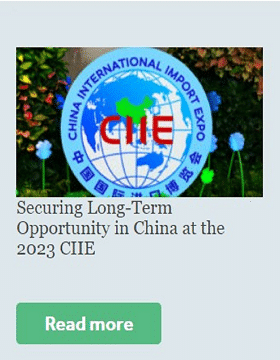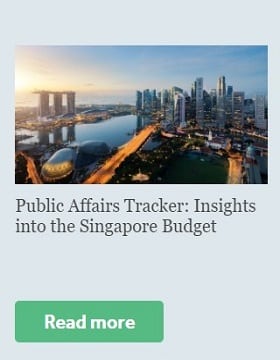
Carbon Capture and Storage (CCS) Set to Play Vital Role in Energy Transition

Ignore the Moral Panic and Embrace Fact-based AI Governance
Hong Kong’s Post-COVID Economic Divergence and Singapore’s Balanced Act
July 2023

Traditionally, Hong Kong has served as a gateway between the Western and Chinese economies and maintained a strong balance between the two sides. But the balance may be shifting.
The city’s latest trade deals with Middle Eastern countries may signal a deviation from this time-honoured path by diversifying to the new non-Western markets and further integration with the mainland. On the other end of Asia Pacific, Singapore maintains a well-balanced approach to its foreign trade relationships. Both cities appear to be heading differently and representing different business needs or positioning – balanced or more non-Western-aligned. Yet, underlying risks and ambiguities remains and companies need to fully grasp the evolving landscape to navigate it.
Despite skepticism about its long-term viability during its COVID19 lockdown, city is clearly on the rebound. Advanced government estimates reveal the GDP has grown 2.7% year-to-year quarterly, fueled by the rejuvenation of inbound tourism and consumption as opposed to a 4.7% contraction for the past three months, prompting experts to believe that economic growth is returning.
The Securities and Futures Commission (SFC) has also recently loosened regulations for family office investments and licencing for cryptocurrency amid a new policy push for a footing in these sectors. Hong Kong’s financial integration with mainland China is also well underway, as it is set to introduce yuan share trading in June. The goal is to bolster the city’s status as an offshore RMB hub and allow investors to interchange security listed in both HKD and RMB, aiming at the growing number of Middle Eastern and Southeast Asian countries that are now using the yuan for their trade settlements while furthering the internationalisation of the currency and Hong Kong’s linkage with the Greater Bay Area.
A tale of revival and divergence
The elevated prominence of RMB in the city indicates a larger trend of the gradual prioritisation for markets outside the Dollar-dominated realms. Geopolitical realities like the growing Sino-US tensions have prompted the city’s leaders to mitigate perceived financial and political risks from the US, and Hong Kong is poised to promote itself as a prime location for Gulf businesses and cater for the growing demand for diversification from the West. Hong Kong’s Chief Executive John Lee’s visit to Saudi Arabia and the UAE can be seen as a spearhead of this path, with six bilateral deals signed with the Kingdom Hong Kong firms bidding for infrastructure projects in the Middle East – as China is also strengthening investment ties with the Saudis.
Hong Kong’s traditional rival, Singapore, is taking a different path. While both cities are currently fiercely competing for dominance in the crypto and Fintech space, the Lion City is adopting a more balanced approach in its bilateral trade focus. In March, the city-state secured a first-of-its-kind Green Economy Framework with the U.K., which combines elements of climate, economic and trade policy. This deal will enable both countries to achieve national decarbonisation targets and is seen by some as the UK’s move to capture trade and investment after Brexit. Also, Singapore’s Prime Minister Lee Hsien Loong signed a series of new investment deals with Kenya and South Africa during his African tour in May. These agreements will focus on sustainability, human capital development and the digital economy, and will cement the already-growing bilateral trade relations with the two African economies. Meanwhile, Singapore has made a series of other deals in the Asia Pacific with various natures. Other deals include a signed agreement with China to deepen cooperation in green finance and with Australia on ramping up green hydrogen production and export, signifying a balanced range of diversification.
Ambiguity remains ahead of Hong Kong
Though a pattern may be emerging for Hong Kong’s policy direction, results and the overall direction need time to materialise. On the one hand, Hong Kong retains some edge in the competition despite the ongoing brain drain, as factors like ample supply of office space, rising rent cost in Singapore and high supply of talented workers continue to maintain its competitiveness for the time being. Opportunities from offshore RMB and the Gulf are certainly welcome by companies tapping into the Chinese or Middle Eastern markets. On the other hand, as the city’s finances shift closer to the non-Western bloc, its risk profile is inevitably tied with the mainland’s. Several companies are found defying US sanctions and supplying microchips to Russia amid its war with Ukraine. Some international firms are becoming skeptical over the city’s status as a disputes resolutions hub citing rule-of-law concerns despite handling a growing number of arbitration cases, and wariness from some tech companies may hinder Hong Kong’s long-term web technology development.
What this means for businesses
These changes are a natural reflection of the geopolitical realities: Hong Kong shifting towards China and the non-Western bloc and Singapore being more global and balanced. They represent a different set of focus and opportunities available for businesses, and it is up to each company to choose what opportunities they are after, and which city is more suitable.
With each business decision, companies need to devise ways to communicate with their stakeholders and anticipate possible reputation risks, owning the brand narrative and positioning before large changes or crises emerge.




